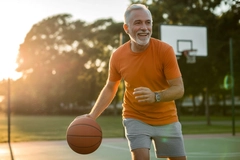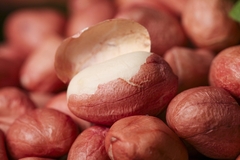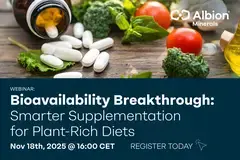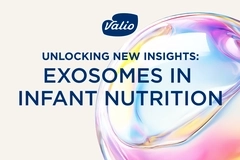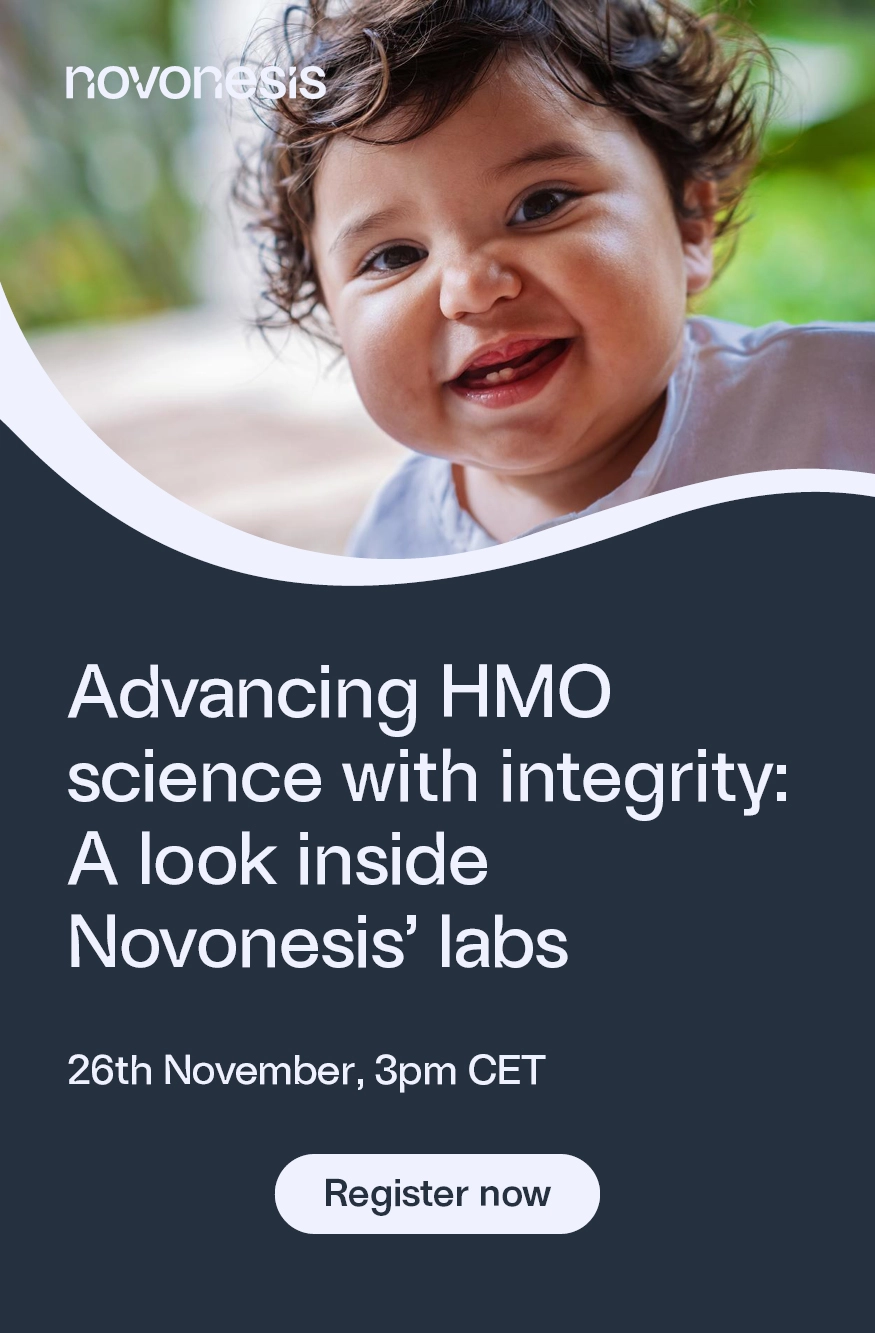World Cancer Day: How nutrition can unlock disease management and prevention
05 Feb 2024 --- The WHO International Agency for Research on Cancer (IARC) predicts over 35 million new cancer cases globally by 2050, an increase of 77% from its 2022 estimate of 20 million cases. Key drivers of this growth include the use of tobacco and alcohol, obesity and air pollution. We examine the potential of nutrition to support patients undergoing treatment and explore studies on nutrients’ anticancer activities that may inspire new research on treatment and complementary therapies.
This year’s World Cancer Day campaign aims to “Close the Care Gap,” as IARC and WHO data reveal global cancer inequities, with a disproportionate impact on underserved populations among a growing cancer burden.
Nutricia, a Danone brand specializing in therapeutic food and medical nutrition, aims to “close the nutritional care gap,” warning that nutrition is an often overlooked area in cancer care. The company stresses that some patients have limited or no access to nutritional advice and that malnutrition screening is not systematically conducted.
“As nutrition is key for better treatment outcomes in cancer, it is crucial to ensure, first and foremost, that nutrition is systematically integrated into cancer care plans everywhere. Patients should have access to appropriate malnutrition screening and credible and timely nutrition advice,” Katrien van Laere, senior VP of R&I and medical nutritional science at Danone, tells Nutrition Insight.

Danone recently partnered with Resilience — a remote patient care solution — to offer an evidence-based screening tool and nutrition module to establish nutrition as an integral part of cancer care.
“Nutrition is essential in keeping the body strong during cancer treatment and recovery, which includes ensuring adequate energy, protein and specific nutrients such as vitamin D, which is a common deficiency among patients with cancer,” she highlights.
Detecting and addressing malnutrition
Van Laere underscores that cancer-related malnutrition affects up to 70% of patients due to the disease and its treatment, specifically chemotherapy and radiotherapy.
“These can affect the patient’s ability to eat or drink and how their body absorbs and uses nutrients. A variety of symptoms such as poor appetite, nausea or taste and smell changes often mean reduced food intake and subsequent weight loss.”
She adds that some cancer types directly affect the body’s ability to consume and digest food effectively and that tumors can increase a patient’s metabolism, leading to muscle loss.
 Cancer-related malnutrition affects up to 70% of patients due to the disease and its treatment.Moreover, she cautions that malnutrition often goes undetected as appropriate screening is not systematically conducted in clinical practice. This can be due to low awareness of the role of nutrition, malnutrition risks or a lack of time. Clinical decision-making relies on patient-reported symptoms, which she notes reinforces the need for patient education and inclusion in clinical settings.
Cancer-related malnutrition affects up to 70% of patients due to the disease and its treatment.Moreover, she cautions that malnutrition often goes undetected as appropriate screening is not systematically conducted in clinical practice. This can be due to low awareness of the role of nutrition, malnutrition risks or a lack of time. Clinical decision-making relies on patient-reported symptoms, which she notes reinforces the need for patient education and inclusion in clinical settings.
“By maintaining adequate nutritional intake and addressing specific needs such as protein, patients can reduce the risk of losing (additional) weight and muscle, helping to ensure the body can tolerate the optimal treatment dose. If a patient with cancer cannot maintain adequate nutritional intake by food alone, the healthcare professional team might recommend medical nutrition.”
Anticancer effects of phytonutrients
Meanwhile, a literature review by international researchers highlights the potential of phytonutrients to reduce the risk of breast cancer recurrence. While the results are promising, the authors stress that they are based on observational studies conducted on women undergoing treatment, adding that the foods and phytonutrients are no alternatives to treatment.
“Our analysis suggests that certain phytonutrients may positively impact disease progression in breast cancer survivors,” lead researcher Kala Visvanathan, professor of oncology and epidemiology at Johns Hopkins School of Medicine, tells us.
Visvanathan and Dr. Diana van Die from NICM Health Research Institute at Western Sydney University in Australia tell us they hope the review prompts further research, considering dose, timing, cancer treatment and multiple endpoints.
The review authors also hope the outcomes “will inform clinicians, breast cancer survivors and policy-makers about the existing evidence from observational studies for soybean, lignans, cruciferous vegetables and green tea, and their phytonutrients, on breast cancer recurrence, breast cancer-specific mortality and all-cause mortality.”
The most robust results were found for soy isoflavones — two to three servings daily were linked with a 26% reduced risk of recurrence in women with breast cancer — and enterolactone, a phytoestrogen metabolized from lignan precursors. The latter reduced the risk of breast-cancer-specific mortality by 28% and all-cause mortality by 31%.
 Researchers recently spotlighted phytonutrients’ effect on breast cancer in an interview with Nutrition Insight.For both nutrients, the review found a significant effect in postmenopausal women. Positive results for green tea were suggestive but based on only two studies, and results for cruciferous vegetable consumption were inconclusive.
Researchers recently spotlighted phytonutrients’ effect on breast cancer in an interview with Nutrition Insight.For both nutrients, the review found a significant effect in postmenopausal women. Positive results for green tea were suggestive but based on only two studies, and results for cruciferous vegetable consumption were inconclusive.
The experts underscore that research supports the anticancer effects of several plants’ phytochemicals. “These agents can regulate several key molecular and metabolic processes identified as cancer hallmarks, including cell signaling, cell cycle regulation, oxidative stress response, inflammation, apoptosis, angiogenesis and metastasis, thereby potentially improving cancer outcomes.”
Anticancer activity of frankincense
At the same time, researchers at the Medical University of South Carolina Hollings Cancer Center, US, found anticancer activity of another botanical. In an early-stage clinical trial with patients, they found an antiproliferative effect of Boswellia serrata extracts against breast cancer tumors.
“Now that we know that Boswellia has anticancer activity, more potent drugs based on the Boswellia supplement might be developed using medicinal chemistry or optimized dosing and delivery of the active natural product,” co-author Nancy Klauber-DeMore, M.D., a professor in cancer research, tells us.
She underscores a need for further, more extensive studies, further optimization of the supplement for drug development and evaluation of its effectiveness on breast cancer survival. Moreover, research should examine the “purified and standardized active metabolites free from inactive materials that may contribute to undesirable side effects or interactions.”
Co-author Mark Hamann, a drug discovery and biomedical sciences professor, adds that the research team has high hopes for its clinical approach “yielding new drugs and drug combinations that would have clearly been missed using in vitro assays.”
The team completed a clinical study on a plant-based extract to verify therapeutic potential and work back to the active metabolites. Hamann emphasizes this is “a very different and innovative approach compared to more traditional natural products screening which begins with laboratory-based assays and follows a more conventional drug discovery and development approach.”
“A clinical approach has considerable merit as it assesses drug activity involving inflammation, immune cell interactions and synergism between drugs that are not measured in most laboratory-based tumor models.”
 The 2022 most commonly occurring cancers were lung (12.4% of new cases), female breast (11.6%) and colorectal cancer (9.6%).“Close the Care Gap”
The 2022 most commonly occurring cancers were lung (12.4% of new cases), female breast (11.6%) and colorectal cancer (9.6%).“Close the Care Gap”
In its estimates of the growing cancer burden, IARC highlights striking inequities globally, most notably in the case of breast cancer — the second most commonly occurring cancer worldwide. In countries with a very high Human Development Index (HDI) — assessing countries on achievements in health, knowledge and standard of living — one in 12 women will be diagnosed, with one in 71 women dying of the disease.
However, in countries with a low HDI, women are 50% less likely to be diagnosed with breast cancer, at one in 27 women, while one in 48 women will die from it. IARC explains that this higher mortality rate is caused by late diagnosis and inadequate access to quality treatment.
Eduard Teixidor, assistant doctor of medical oncology at the Catalan Institute of Oncology, and Dr. Josep Trueta from the Girona University Hospital, Spain, comment that the increase in cancer cases is related to exponential population growth and life expectancy improvements. They note that early diagnosis and treatment, crucial for cancer survival, have a high economic impact.
“The growing inequity between countries will increasingly highlight differences in the ability to tackle malignancies. The current situation already represents a global problem; however, with these dynamics, it will inevitably intensify exponentially sooner rather than later. It is our responsibility, as a society, to meet this challenge by implementing comprehensive prevention measures and improving the cost-effectiveness of our treatments.”
The WHO’s global cancer survey further reveals that only 39% of participating countries cover the basics of cancer management in core health services, so-called health benefit packages (HBP), while only 28% of participating countries include additional covered care for patients that require palliative care.
The survey also revealed significant global inequities. For example, lung cancer-related services were four to seven times more likely to be included in an HBP in a high-income than a lower-income country.
By Jolanda van Hal

